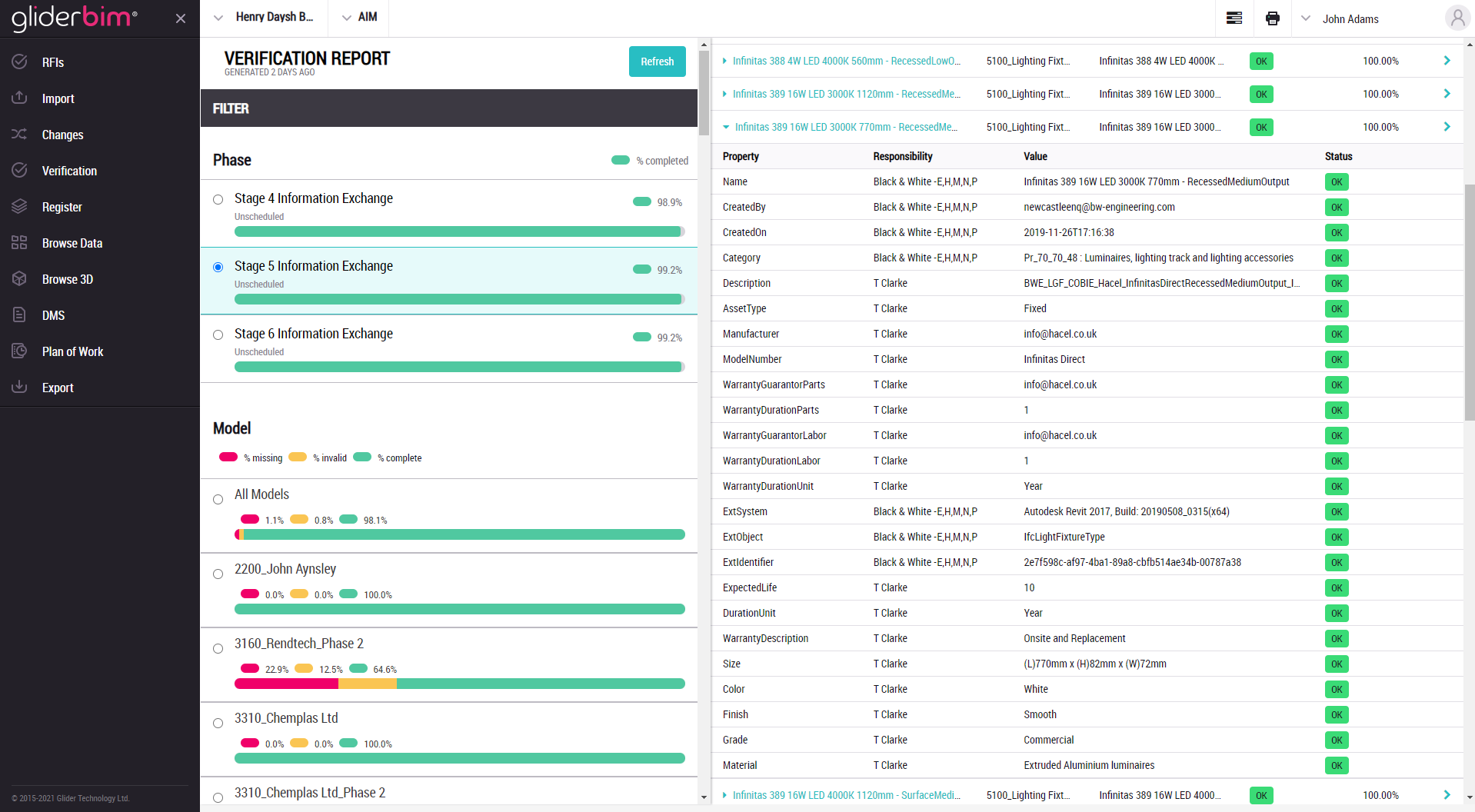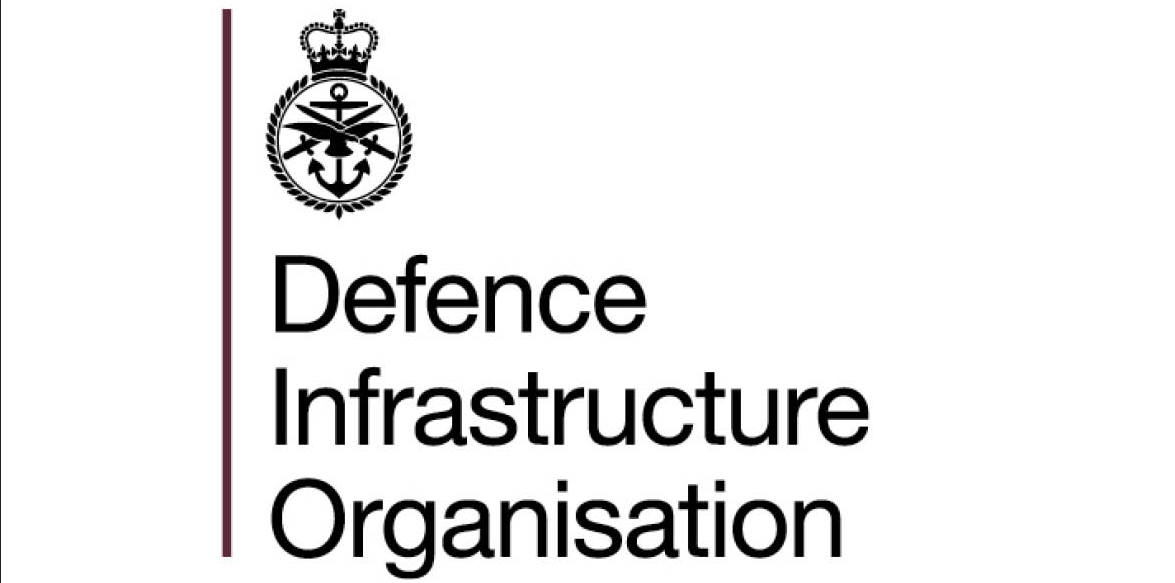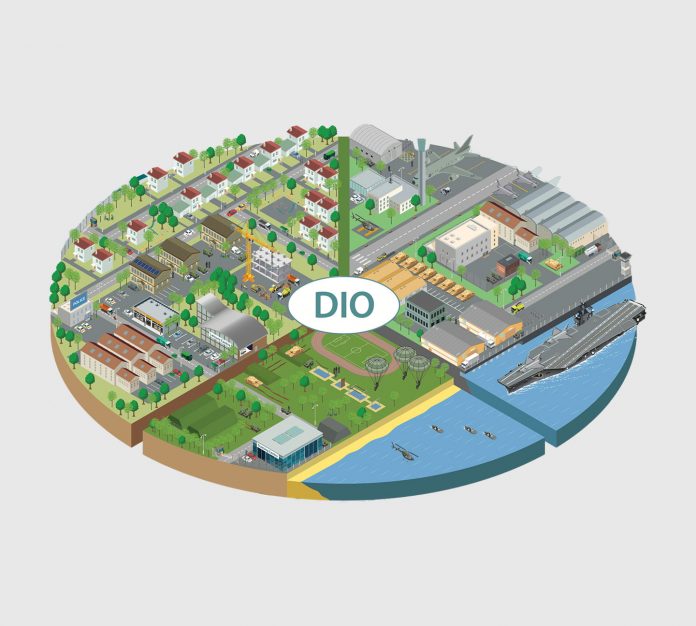Glider Technology Limited discusses built asset data and its importance for the construction industry
For many building managers, property, and estate teams, finding the information needed to support everyday decisions about the operation of a building or the performance of the wider estate can be a challenge. All too often documents and records are undiscoverable, inaccurate or incomplete. Built asset data may not have been correctly procured, managed or maintained over the useful life of a building and as such the lack of providence and trust in this data means it is rarely used or relied upon.
The resultant effect of poorly procured, managed and maintained asset information is frustration, wasted time and unbudgeted costs and in the worst-case scenario, financial claim or prosecution for non-compliance.
A significant step forward for the construction industry The UK Government Building Information Modelling (BIM) mandate in April 2016 was a significant step forward for the construction industry, providing the processes and guidance, standards and governance for designing, constructing and operating built assets. Fast forward 6 years, and with the adoption of information management standards increasing and BIM knowledge maturing, are building managers, estates and facilities teams better empowered to answer everyday questions about their estate?
The answer is still generally NO, albeit there are a growing number of public and private sector organisations on their digital journey and benefitting from the efficiencies that standards based, open and interoperable ways of working bring.

In recent years, the catalysts for change in industry information management practices have included the Grenfell Tower tragedy and the ensuing Dame Judith Hackett report which advocated the need for a Golden Thread of information relating to design and construction decisions to be maintained. The Building Safety Bill (which met with Royal Assent in 2022 and comes into force in 2023), requires building owners to evidence a Building Safety Case for built assets (over 18 metres tall).
Information security and the threat of cyber-attack or breach, none more so as the threats posed to critical national infrastructure and/or government buildings like prisons, hospitals and schools. Attaining the UK Governments Carbon Net Zero by 2030 and embracing new ways of building and operating built assets to build sustainably and reduce in-use energy consumption.
Infrastructure needed to support defence
The Defence Infrastructure Organisation (DIO) is a prominent example of a progressive government department on this transformation journey. The DIO is an operating arm of the Ministry of Defence (MOD) and plays a vital role in supporting the UK’s armed forces by building, maintaining and servicing the infrastructure needed to support defence. DIO manages around 1.8% of the UK’s landmass, including 115,000 non-residential buildings and 50,000 houses.
The DIO has published a Defence Infrastructure Data and Management Information (IDMI) strategy that articulates its strategic aims and how it will deliver against these. The IDMI strategy includes objectives focused on improving the understanding of how their estate and built assets are used, improving decision-making at every stage of the asset life cycle, treating data as an asset and securing their data whilst ensuring exploitability.
Alongside the DIO team and other key external partners, Glider Technology Limited (Glider) has been integral to the enablement of the asset information management workstream of this extensive transformation project.
gliderbim® was procured by the DIO via the Government Digital Marketplace, G-Cloud framework. Aside from a data-first architecture and functional capability, DIO’s non-functional requirements included the selection of a UK data sovereign solution, with strong cybersecurity credentials that support openness and interoperability and a standards-based approach to working, which are consistent with the UK BIM Framework ISO 19650.
Glider commenced their engagement with a pathfinder in 2019, to validate DIO’s intended direction and approach to asset information management.
Better decision-making through common data standards
Following a successful pathfinder, gliderbim® was selected as the DIO’s enduring Asset Information Modelling (AIM), Common Data Environment (CDE) solution, AIM CDE for short! To enable better decision-making through common data standards and assured evidence based on trusted data, Glider consultants have been assisting with the definition of a Reference Data Library, and Common Data Model underpinned by the AIM CDE.
This ensures consistency in the communication of DIO project and asset information requirements, and the subsequent validation and assurance of asset information from the DIO’s supply chain during the capital and operational phases of an asset life cycle. The DIO launched gliderbim® AIM CDE for capital developments on their Major Programmes and Projects (MPP) and Future Defence Infrastructure Services (FDIS) contracts.
Glider has a rigorous, data-first and cyber secure infrastructure and is a trusted supplier and UK BIM Alliance affiliate, delivering against the ISO 19650 standards defined under the UK BIM Framework. Glider is a UK owned and based organisation supporting data sovereign requirements, and that has attained Cyber Essentials and Cyber Essential Plus certified (a prerequisite for government and Public Sector contracts) as well as being ISO 27001, and MOD CyDR certified.
Additionally, Glider has responded to CPNI Cloud Security principles to strengthen an organisation’s security posture around the management of and access to its asset data. We are also pioneering a platform approach with DIO. The Government Industry and Interoperability Group (GiiG) is now advocating and supporting public sector organisations in shaping their information management approach and has published guidance consistent with the GiiG’s aims. Its goal is to help the built environment industry deliver, and benefit from, interoperable information by developing a standardised approach.
Information has a downstream purpose
Glider advocates the Government Soft Landings approach and the importance of engaging operational teams early in the construction process, ensuring that information has a downstream purpose and the handover of built assets at Practical Completion (PC) is seamless. Gliderbim® also has data migration and integration capabilities which is essential for managing legacy estate data, such as the rich estate database of DIO.
Moreover, Glider is supporting the government’s sustainability goals. The UK Government is on track to reach net zero by 2030. In achieving these goals ESG reporting will become essential and intelligent buildings will become an integral part of the carbon neutral journey. By linking building sensors, IoT devices and smart meters to a central intelligent building operating system, occupiers can streamline energy use.
This will reduce all stakeholders’ energy costs, as well as aid building owners in achieving net zero and reducing environmental impact. Glider is part of a consortium developing a Smart Buildings Overlay to the RIBA Plan of Work to contribute towards a more sustainable future in line with government goals.
To find out more about Glider and gliderbim® call 0202 8268 001 or email info@glidertech.com.
Glider Technology Limited
Tel: +44 (0)202 8268 001
info@glidertech.com
gliderbim® (https://glidertech.com/gliderbim/)



This work is licensed under Creative Commons Attribution-NonCommercial-NoDerivatives 4.0 International.











